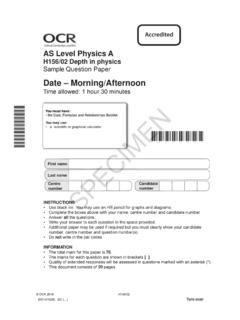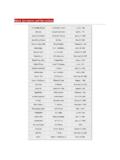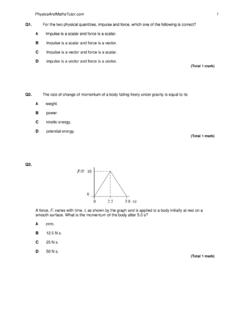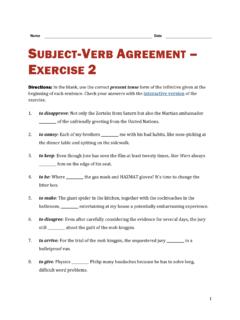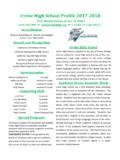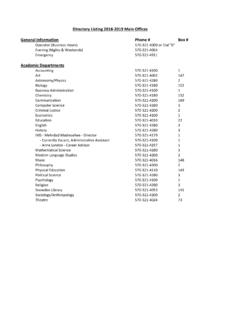Transcription of The physics of golf - raypenner.com
1 INSTITUTE OFPHYSICSPUBLISHINGREPORTS ONPROGRESS INPHYSICSRep. Prog. (2003) 131 171 PII: S0034-4885(03)31567-2 The physics of golfA Raymond PennerPhysics Department, Malaspina University-College, Nanaimo, British Columbia, V9R 5S5,CanadaReceived 31 October 2002 Published 20 December 2002 Online overview of the application of physics to the game of golf is given. The golf swing ismodelled as a double pendulum. This model and its variations have been used extensively byresearchers in determining the effect that various swing parameters have on clubhead results as well as examples of three-link models are discussed. Kinematic and kineticmeasurements taken on the recorded downswings of golfers as well as force measurementsare reviewed. These measurements highlight differences between the swings of skilled andunskilled aspects of the behaviour of a golf ball are examined.
2 Measurements and modelsof the impact of golf balls with barriers are reviewed. Such measurements have allowedresearchers to determine the effect that different golf ball constructions have on their launchparameters. The launch parameters determine not only the length of the golf shot but also thebehaviour of the golf ball on impact with the turf. The effect of dimples on the aerodynamics ofa golf ball and the length of the golf shot is discussed. Models of the bounce and roll of a golfball after impact with the turf as well as models of the motion of a putted ball are have measured and modelled the behaviour of both the shaft and the clubheadduring the downswing and at impact. The effect that clubhead mass and loft as well as the shaftlength and mass have on the length of a golf shot are considered.
3 Models and measurementsof the flexing of the shaft as well as research into the flexing of the clubface and the effectsof its surface roughness are presented. An important consideration in clubhead design is itsbehaviour during off-centre impacts. In line with this, the effects that the curvature of a clubfaceand the moments of inertia of the clubhead have on the launch parameters and trajectory of anoff-centred impacted golf ball are +41$ 2003 IOP Publishing LtdPrinted in the UK131132A R PennerContentsPage1. Introduction1332. The physics of the golf Modelling the golf Double pendulum Increasing clubhead Triple-link Measurements taken on Kinematic and kinetic Force measurements1433. The physics of the golf Impact between golf ball and Normal forces and the coefficient of Tangential forces and golf ball Interaction between golf ball and The run of a golf Putting1554.
4 The physics of the golf The Effect of length and Shaft The Optimum mass and Clubface Clubface Off-centre Club design1675. Conclusion168 References169 The physics of golf1331. IntroductionThe game of golf , in one form or another, has been around for over five hundred years. Itcan be assumed that even during the very early stages of the game, players, especially thosewith a scientific inclination, were curious as to the behaviour of the ball and the clubs, andexperimented on ways to improve their performance. Over the years, changes to the equipment,as well as the golf swing, have been based more on trial and error than on any application ofscientific principles. It has only been over the last several decades that science, and physicsin particular, has been used in a significant way to understand and improve the performanceof golfers and their equipment.
5 In fact, it can be argued that the scientific study of the gameundertaken by the golf Society of Great Britain in 1968, with their findings presented byCochran and Stobbs (1968) in their bookSearch for the Perfect Swing, is the starting point ofthe scientific development of the game of golf . Since then a myriad of papers in a wide range ofjournals have appeared on the subject. Books by Daish (1972) and more recently by Jorgensen(1994), and Werner and Greig (2000) have all provided detailed analyses of different aspectsof the game. In 1990, the first World Scientific Congress of golf was held in St Andrews,Scotland, with topics ranging from biomechanics to ball dimple patterns. This Congress hasmet every four years since, and its published proceedings (Cochran 1990, Cochran and Farrally1994, Farrally and Cochran 1999) have been a major source for this goal of much of the scientific research into the game and its equipment has been toimprove the performance of golfers, professional and amateur alike.
6 This research has not beentotally altruistic as golf companies compete for larger portions of the golfing world s economicpie. However, some research has also been carried out solely in order to understand the physicsbehind some particular phenomena, and few sports provide as many physics problems as doesthe game of review paper will present many examples of the research that has been carried outin the field. Certainly, not all of the research that has found its way into the many journals,books and conference proceedings is included in this paper. Also, for the work that is reported,typically only a small part of the given research is presented. The author apologizes for theomissions; however, it is hoped that the theories, models and results that are presented willgive the reader a broad overview of the field.
7 The research has been divided into three mainareas: the physics of the golf swing, the physics of the golf ball and the physics of the golfclub. Although some of the research overlaps more than one of these areas, this division hasallowed the author to maintain some order in the The physics of the golf swingThere is no aspect of golf that has been discussed, analysed and advised upon more than thegolf swing. The most comprehensive scientific study of the golf swing is still that whichwas undertaken by the golf Society of Great Britain and presented by Cochran and Stobbs(1968). In this study the golf swing is modelled as a double pendulum system, a model thatlater researchers have used extensively to analyse the swings of both skilled and unskilledgolfers.
8 The first part of this section on the physics of the golf swing will focus on the doublependulum swing model, and its variations, along with its use in determining ways to increasethe clubhead speed. The use of three-link swing models in the analysis of golf swings will thenbe discussed. Following this, some of the kinematic, kinetic and force measurements that havebeen taken on golfers, both skilled and unskilled, and their relationship to the swing models,will be R Modelling the golf Double pendulum 1 shows the motion of the arms and golf club during atypical downswing. The primary model that golf researchers have used to analyse this motionis based on a double pendulum or double link system. The two links that are used in this modelare included in figure 1.
9 The upper link represents the golfer s shoulders and arms, whichrotate about a central hub corresponding roughly to a point between the golfer s lower link represents the golf club, which rotates about a point or hinge located at thecentre of the hands and wrists of the golfer. The basis for the double pendulum model stemsfrom the modern practice of keeping the left arm (for a right-handed golfer) straight duringthe downswing. In the model the backswing is normally ignored and the two links begin inthe stationary position that is shown in figure 1(a). The angular position of the lower link, ,at the top of the backswing is referred to as the backswing angle while the angular position ofthe upper link, with respect to the lower link, is referred to as the wrist-cock angle.
10 Duringthe downswing the two links are taken to rotate in a single plane that is inclined to the the basic version of the model the hub is taken to be fixed in position and all the golfer sefforts in rotating his or her hips, trunk and arms are equated to a single couple, 0, applied atthis central pivot. In addition, this couple is often modelled to be constant over the durationof the of the angular positions of the arms and clubs of skilled golfers, suchas those made by Budney and Bellow (1979, 1982), indicate that the wrist-cock angle staysapproximately constant during the first half of the downswing. The downswing in the doublependulum model has, therefore, typically been divided into two distinct stages. During thefirst stage of the downswing the wrist-cock angle is fixed and the double pendulum systemrotates as one.
